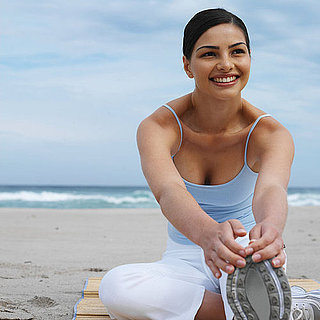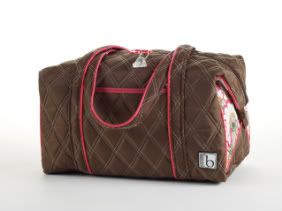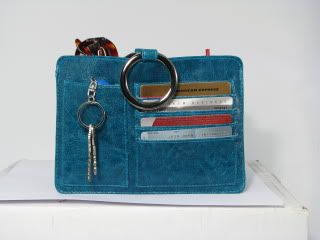
Photo: © artparadigm/Getty Images
Being a vegetarian is not nearly as difficult as it used to be. While a 2003 survey found that only 2.8 percent of Americans identify as strictly vegetarian, over the past 20 years, vegetarian-friendly products, restaurants and — most importantly — mindsets have become the norm across most of the country. Still, for people who grew up with meat at the center of their meals, shifting toward a flesh-free diet can pose significant challenges. Here are a few survival-guide tips for transitioning seamlessly (and deliciously) into a vegetarian lifestyle.
This guide was designed for vegetarians who do not eat meat, fish or fowl but do eat eggs and dairy. Many of the tips — though not all — would work for vegans as well.
Hone your pitch
Vegetarians are regularly barraged with questions and comments — some well meaning or curious, and others less so — about their vegetarian status. Before finding yourself in such a situation, decide exactly why you went vegetarian. Maybe you object to factory farm abuse, maybe you think eating animals is a misuse of ecological resources, or maybe you just love animals too much to imagine eating them — whatever your answer is, decide in advance so you don't get stuck looking like you have not thought through your decision.
• Bonus tips: As much as possible, try to avoid having conversations about meat eating (or your lack thereof) during meal times — especially if the people questioning you have meat on their plate, which puts them on the moral defensive. Tell them you would be happy to explain your reasoning, but would prefer to do it after dinner.
• The conversation will go much more smoothly if you avoid proselytizing your food ethics. Explain your stance, and let your friends and family draw their own conclusions.
See a nutritionist
Eating a complete, healthy diet as a vegetarian is easy — but not if you replace chicken dinners with bagels and French fries at every meal. Early on, consult with a nutritionist or dietician about the best non-animal sources for vitamins, calcium, iron and protein, and tips for putting together nourishing meals. On a related note …
as a vegetarian is easy — but not if you replace chicken dinners with bagels and French fries at every meal. Early on, consult with a nutritionist or dietician about the best non-animal sources for vitamins, calcium, iron and protein, and tips for putting together nourishing meals. On a related note …
Don't hate vegetables
If you dislike fruits and vegetables , you probably should not become a vegetarian. This should be self-explanatory, but remarkably, a lot of new vegetarians seem to forget these simple words of wisdom.
, you probably should not become a vegetarian. This should be self-explanatory, but remarkably, a lot of new vegetarians seem to forget these simple words of wisdom.
Stock up on cookbooks
Aside from nutrition basics, kitchen knowledge is a vegetarian's most valuable tool. Keep an eye out for vegetarian-friendly cooking classes in your neighborhood, and purchase a few trustworthy cookbooks that will propel your repertoire light-years beyond tofu stir-fry and brown rice.
A few titles to try: Veganomicon, Vegetarian Cooking for Everyone, anything by Moosewood, How to Cook Everything Vegetarian, Quick Fix Vegetarian, and any of the inspiring books found here. Vegetarian and vegan magazines and blogs are also great resources for recipe ideas .
.
Figure out a holiday strategy
Holiday meals, which are often eaten at other people's homes and center around turkey, ham, brisket or some other animal protein, can be some of the trickiest times to maintain your vegetarian ideals. If you are eating at someone else's table, contact the host in advance about your dietary needs. Some cooks will be happy to modify or supplement their menu for you — but if you sense them getting stressed out, offer to bring a complementary vegetarian main dish to share.
Find a friend (or community)
Trying to venture out solo on any new lifestyle makes the process all the more difficult. If you have a friend or partner who is equally interested in going vegetarian, buddy up as each other's support and sounding board. Or if you have friends who have maintained their vegetarian lifestyles for a while, set up a few coffee dates to pick their brains for advice, resources and inspiration. If you do not know any vegetarians or aspiring vegetarians, check out an online community forum (e.g. Veggie Boards) to link up to meat-free people from across the globe.
Decide on your leather policy
Some vegetarians eschew leather, while others do not conflate what they eat and what they wear. Early on, decide whether you see avoiding leather as part of your vegetarianism. If you choose to avoid it, do some research into alternative sources for leather-free shoes, wallets, belts etc. A few good sources to check: Payless, Moo Shoes, Vegan Chic and Alternative Outfitters.
Spare your pets
As this post on Treehugger attests, the debate about whether vegetarians should force their dogs and cats to share their food values is fiercely raging. Every pet owner gets to decide which brand of food to buy — but before you decide to enforce your vegetarian standards on your pets, consider that animals have different dietary needs from humans, and cannot adequately communicate those needs to you. In other words, if you are 100 percent against feeding your pets meat products, owning a pet might not be the most responsible choice.
Stay ethically flexible
Over time, as you continue to read about food ethics and sustainable eating, you might find that your food values shift. Perhaps you will find that being vegetarian isn't "enough" for you and decide to become vegan. Or, maybe you will find that occasionally eating meat (grass-fed and humanely slaughtered, of course) feels right. Do not freak out about changing your mind — making decisions around eating is a lifelong practice, and the most important thing is to keep an open, conscious mind.








































